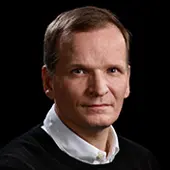Finland and 6G: A testbed for building digital resilience
As a global hub for 6G innovation, Finland is defining how this next wave of connectivity will make our societies more resilient. Finland welcomes collaboration with international companies, universities and other organizations.
News 4.12.2024

On 1 July 1991, Finland’s then Prime Minister Harri Holkeri stood in Helsinki’s Esplanade Park and made the world’s first GSM call on a Nokia prototype phone. He called Kaarina Suonio, the Deputy Mayor of the city of Tampere, with Holkeri famously saying the voice quality was so clear it was “like talking to someone in the next room.”
Holkeri and Suonio reportedly also discussed the security features embedded within the GSM standard – a game-changer for mobile communications at the time. GSM’s encryption protocols and secure access mechanisms set the global benchmark, positioning Finland as an R&D hub for wireless communication. The legendary call would last just three minutes, but its impact is felt in Finland to this day.
"What really sets us apart is the ability to cover the entire chain – from radio technologies and network infrastructure to semiconductors and handsets."
“We started developing our mobile competence in the 1980s. This industry is deeply entrenched in Finland,” explains Jöns Tuomaranta, Senior Advisor at Business Finland.
“What really sets us apart is the ability to cover the entire chain – from radio technologies and network infrastructure to semiconductors and handsets. We have a powerful R&D ecosystem, innovative companies and supportive government funding. It’s a rare combination that makes it easy for international companies to come here and develop their business in this space,” says Tuomaranta.
Test your 6G use cases in Finland
Finland is already laying the groundwork for the forthcoming 6G era of wireless communications. Higher frequency bands will enable significantly faster data transmission, while handsets will have radar-like environmental sensing capabilities and be able to connect with low-Earth orbit satellites.
“6G technology holds immense potential for strengthening digital resilience against natural disasters and conflicts. The integration of satellite communication will help to enable so-called ‘tactical bubbles’ – ad-hoc networks that can be rapidly deployed in areas where infrastructure has been destroyed or never been built,” explains Pekka Rantala, Head of 6G Bridge Program at Business Finland.
Finland is already laying the groundwork for the forthcoming 6G era of wireless communications. Higher frequency bands will enable significantly faster data transmission.
The industry’s expansion into 6G frequencies creates strong demand for companies working at the component level, particularly those developing semiconductors and radio-frequency modules. Finland’s advanced ecosystem provides an ideal environment for this innovation.
“Finland has great test infrastructure. This is a very good place to try out future business cases. We have an agile process for organizing test licenses, so we can quickly provide spectrum for specific applications. It’s much easier for companies to innovate here compared to many other countries,” says Rantala.
Building resilience in harsh environments
Finland is also focusing on the industrial applications of 6G technology, particularly in challenging environments. Underground mining, for example, stands to benefit from improved safety due to 6G’s enhanced sensing capabilities.
“Our surroundings leave a handprint on radio waves. When we combine these handprints with machine-learning algorithms, we can map environments with precision. This is especially relevant with the higher frequency bands of 6G, which will enable use cases such as real-time object detection and autonomous driving in harsh conditions,” explains Tuomaranta.
With its long expertise in industrial automation, Finland is a unique testing ground for industrial applications.
With its long expertise in industrial automation, Finland is a unique testing ground for these industrial applications. Companies can explore how 6G-driven automation will improve productivity by reducing downtime, minimizing waste and opening entirely new business opportunities. Many 6G applications will have a dual-use benefit, for both civil and defense purposes.
“Finland is now going through different types of 6G use cases to see which ones are most beneficial to focus on,” explains Tuomaranta. “We already have a portfolio of projects with industrial and defense applications. This is a collaborative process and we get a lot of interest from international companies and universities. Finland is learning what the world needs from 6G, so we can build a resilient future together.”
More information
Business Finland is attending MWC 2025 together with Finnish companies and research organizations. Come visit the Finland Pavilion in Barcelona at Fira Gran Via, in Hall 5, booth 5J45 and dive deeper into next generation of connectivity and digital resilience.
Finnish companies and research organizations at Finland Pavilion

Communications and Mobility, Electronics and Electrics, Games and Immersive, Software and Data

Communications and Mobility